Deep in the woods: Watch photographer Andrew West set up his wildlife camera
Lights. Camera. Action!
The location where award-winning photographer Andrew West sets up his wildlife camera trap is a secret. The best we can tell you is it looks a little bit like a Hollywood movie set, but it's not.
It's the real woods, with the real animals, the real insects and the real Florida weather elements like rain, wind, humidity and mud.
In the video above, you got a rare glimpse at the set up and how Andrew, who is a visuals journalist for The News-Press and Naples Daily News, makes the magic come together. Since he's been doing this for a while now, we thought it would be a good idea to ask Andrew a few questions about this labor of love of his:
Q. How long have you been using the camera trap?
WEST: I started using the camera trap setup in 2016. We were doing a story on panthers, and the only way to get a photo of one is to have an almost once-in-a-lifetime sighting. The camera trap allows close-up views of wildlife without me having to be there.
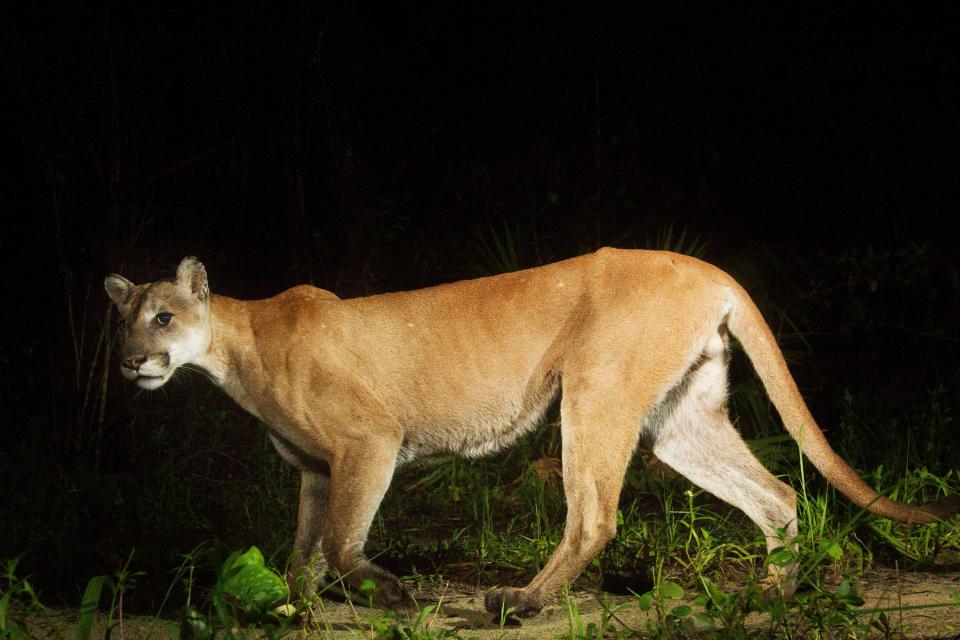
Q. How long does it take you to set up the equipment?
WEST: Equipment setup takes about 15-30 minutes. Testing the light, flash triggers, and other variables such as wind can double the time. The hike to the location can take anywhere from 15- 45 minutes and sometimes longer. The system includes the following:
DSLR camera
Waterproof housing
A motion sensor
Several off camera flashes that are triggered wirelessly
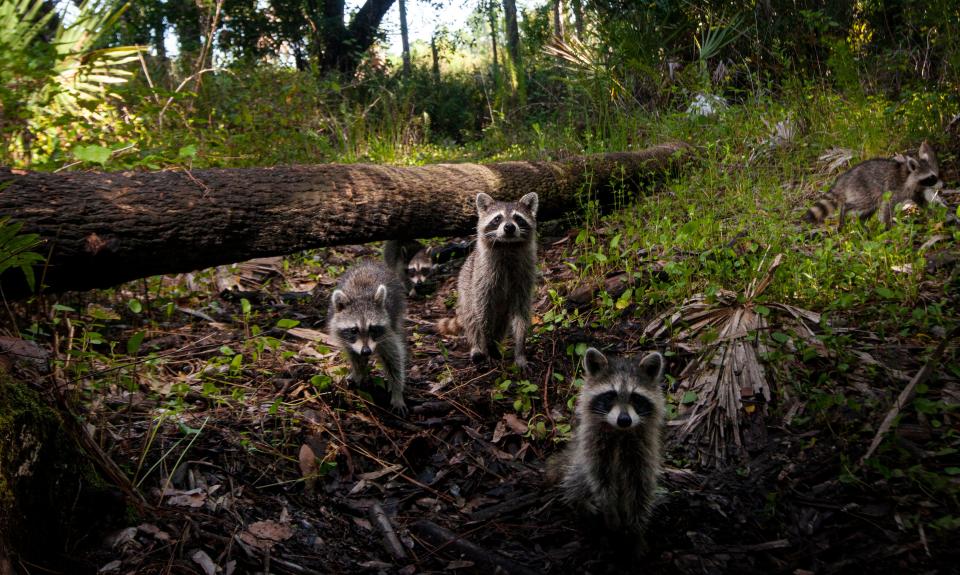
Q. How often do you check the camera trap and download images?
WEST: Usually, I check it once every 7-10 days because this is how long the batteries last. I am usually anxious to see if I have captured any good images.
Q. What is the process of going through the images? How many do you have to look at to find something worth publishing?
WEST: That all depends on how well I have set up the system. The camera is very wind-sensitive. If it trips 300 times, I am lucky to get two or three good images. I have spent years trying to perfect the system through often frustrating trial and error to get it right. The hardest part is looking at the back of the camera and seeing the near misses of what would have been amazing images. Currently, I think my settings are pretty reliable. I consistently get two to three images of the animals in good light, which means the flashes are going off at the right time from the correct distance. On windy days, I capture a lot of waving grass and trees.
Q. What are some of the most memorable photographs the camera trap has produced?
WEST: My favorites are a pair of panthers, a family of raccoons, a black bear, some cool photos of white-tailed deer and a bobcat at dawn or dusk.
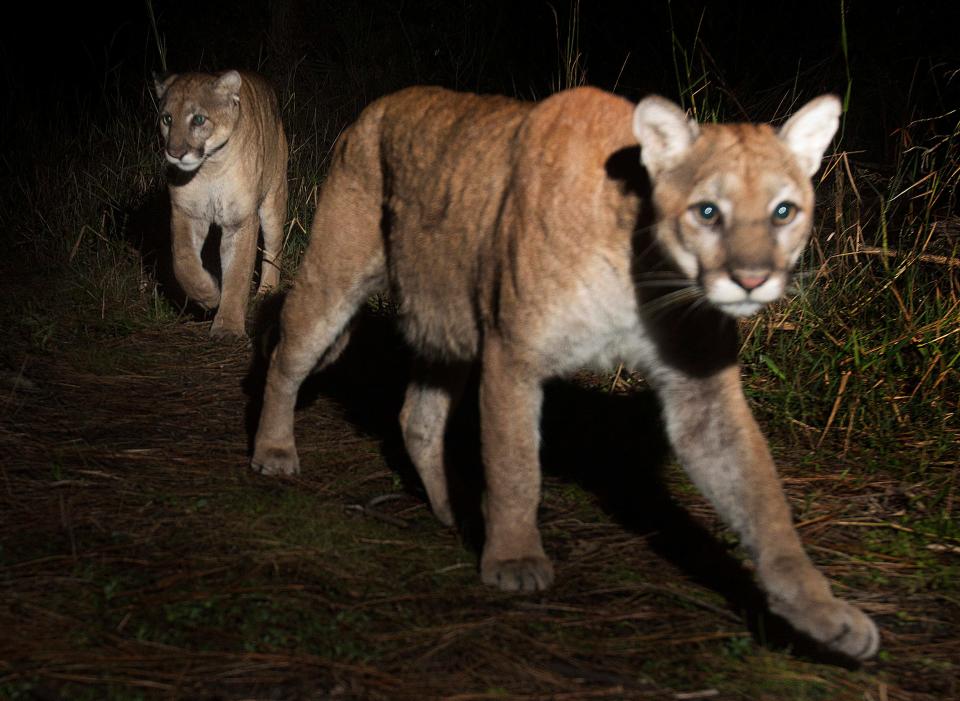
The biggest miss I have had was when a panther crossed over a fallen tree that had water underneath. After Hurricane Ian, I was unable to check the camera because CREW was closed to foot traffic. I was unable to change batteries in the flashes. I had several frames that were really underexposed. I brought them up in photoshop. I couldn’t believe it when I saw a panther in the low light using the log to stay dry. The images were unusable because of the noise in the image and the underexposure. However, if that would have worked out, It would have been an award winner. Therein lies the challenges of the system.
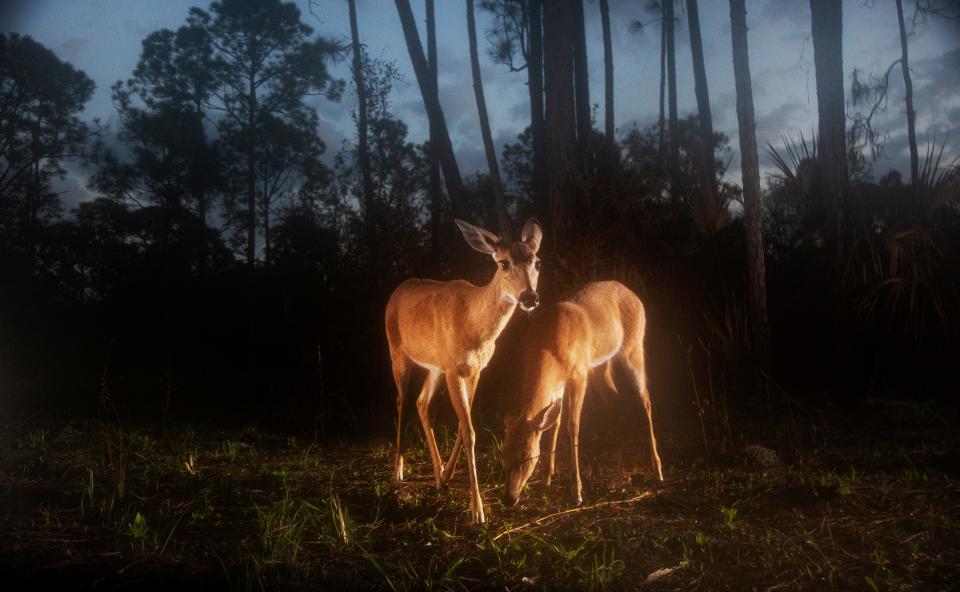
Q. Do you have an all-time favorite photograph, or what is in your Top-3 captures?
WEST: I have a lot of all time favorites. My current favorite is a recent close-up photo of a panther I like the sharpness of its tawny fur and the quality of light on its face. I love checking the trap. Looking at the back of a digital camera is like opening a gift. The joy is not knowing what I am going to get. The frustration comes from going months without getting anything useable because of some glitch with the camera, sensor, cords, and flashes.
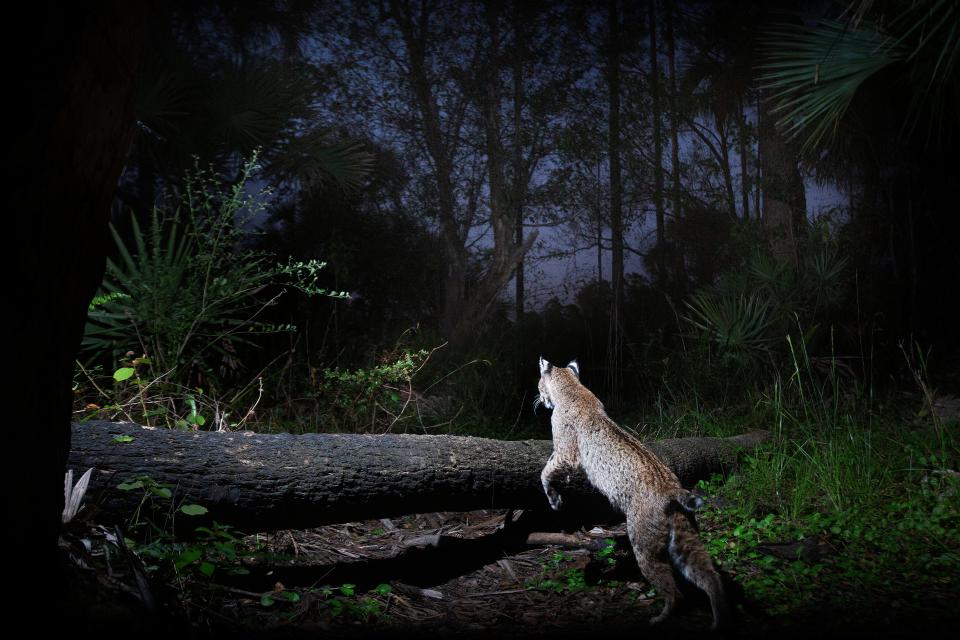
Q. Anything else you want to add or tell our audience about photographic wildlife? Any tips if they are hiking and see a critter?
WEST: Most importantly, do your research about the animals/birds you want to photograph so that you know where you can find them. The best time of day to capture is usually in the morning around dawn or dusk; however, I prefer shooting in the morning.
Try to be as respectful as possible of the wildlife you are shooting. Don’t alter the behavior of the animal/bird on purpose. Have the proper equipment. Long lenses are ideal for most situations. Enjoy the moment. After more than 25 years of shooting our local flora and fauna, I love the surprises, challenges, and rewards that come with each new day.
This article originally appeared on Fort Myers News-Press: Florida panthers, bears racoons and more caught on wildlife camera

